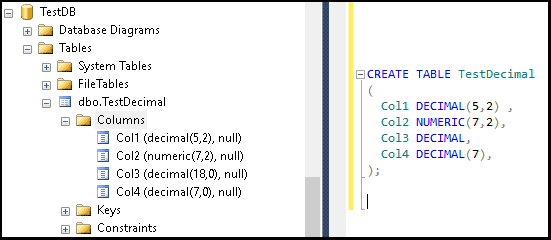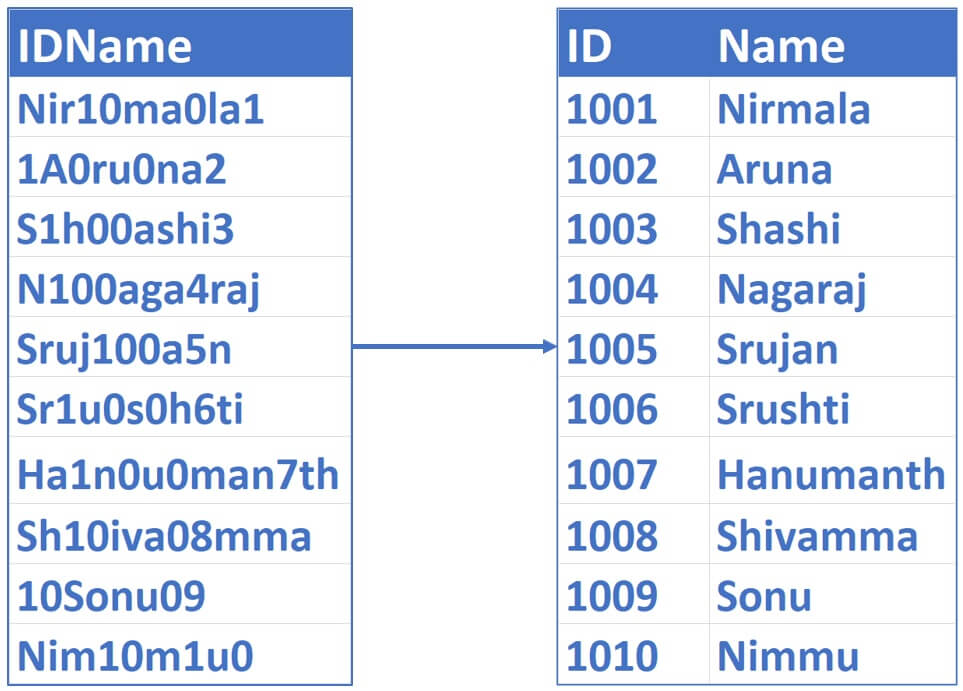

The results are returned by using a SELECT statement. The following example creates a table using the decimal and numeric data types. This is no longer a restriction as of SQL Server 2016 (13.x). Any float value less than 5E-18 (when set using either the scientific notation of 5E-18 or the decimal notation of 0.000000000000000005) rounds down to 0. Referencia de Transact-SQL para los tipos de datos decimal y numeric. Prior to SQL Server 2016 (13.x), conversion of float values to decimal or numeric is restricted to values of precision 17 digits only. Loss of only precision and scale isn't sufficient to raise an error. Conversely, if the SET ARITHABORT option is ON, SQL Server raises an error when overflow occurs. Converting from int, smallint, tinyint, float, real, money, or smallmoney to either decimal or numeric can cause overflow.īy default, SQL Server uses rounding when converting a number to a decimal or numeric value with a lower precision and scale. For example, the constant 12.345 is converted into a numeric value with a precision of 5 and a scale of 3.Ĭonverting from decimal or numeric to float or real can cause some loss of precision. In Transact-SQL statements, a constant with a decimal point is automatically converted into a numeric data value, using the minimum precision and scale necessary. For example, decimal(5,5) and decimal(5,0) are considered different data types. Converting decimal and numeric dataįor decimal and numeric data types, SQL Server considers each combination of precision and scale as a different data type.

Precision is an integer representing the total number of digits allowed in a. Character strings that are larger than the page size of the table can be stored as a Character Large Object (CLOB).Informatica (connected through the SQL Server PDW Informatica Connector) only supports 16 significant digits, regardless of the precision and scale specified. The NUMERIC data type is an exact number with a fixed precision and scale. The minimum length of the CHARACTER data type is 1 and it can have a maximum length up to the table page size. If no length is specified during the declaration, the default length is 1. The length of the character string should be specified in the data type declaration for example, CHARACTER(n) where n represents the desired length of the character string. The CHARACTER data type accepts character strings, including Unicode, of a fixed length.
#Sql numeric how to
Tables are provided at the end of the chapter to show the mappings between PointBase data types and industry standard and other common non-standard data types. In this tutorial, we will cover how to use the following SQL Server T-SQL functions with the following examples: Using CAST - SELECT CAST (5634.6334 as int) as number.

The following sections describe each PointBase data type in detail and discuss converting data types. Data types define what type of data a column can contain. This chapter describes all of the SQL data types that PointBase supports.


 0 kommentar(er)
0 kommentar(er)
